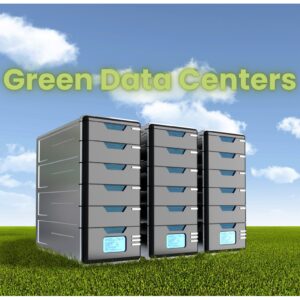As a business leader in Asia, they require flexible and scalable IT solutions to drive their digital transformation strategy. Transitioning to a hybrid cloud environment offers an optimal balance by combining the security of private clouds with the scalability of public clouds. This approach supports innovation across diverse industries. With edge computing expanding hybrid cloud capabilities in Asia, expand the choices in deploying secure, high-performance infrastructure to unlock new opportunities as a growing business. Understanding the hybrid cloud landscape enable businesses to make informed decisions when architecting solutions tailored to their strategic goals. Let us explore.
The Rise of Hybrid Cloud in Asia
Increasing Need for Flexibility
- As Asian companies accelerate their digital transformation, the demand for flexible and scalable IT solutions grows. Hence why hybrid cloud architecture offers businesses the ability to dynamically allocate resources between private and public clouds depending on their needs. Thus, this flexibility allows companies to optimize costs and performance, gaining a competitive advantage.
Data Residency and Security
- For companies handling customer data, data privacy regulations often require data to be stored locally. Hybrid cloud models with private cloud components located in-country also enable businesses to comply with data residency laws while still leveraging the scalability of public clouds when needed. Additionally, hybrid clouds provide enhanced security through private network connections and data encryption.
Optimized Workloads
- A hybrid cloud infrastructure is ideal for running optimized workloads in the optimal environment. Companies can run core business applications with sensitive data in a private cloud while also leveraging public cloud services for web applications, storage, and computing power. Workloads can also be moved between private and public clouds as needs change. This ability to allocate resources for specific workloads significantly improves application performance and reduces costs.
Increased Innovation
- The flexibility and scalability of hybrid cloud architectures fuel innovation. Therefore, resources can be provisioned quickly, allowing companies to experiment with new technologies at a lower cost. Hybrid clouds also enable businesses to get new products and services to market faster by accelerating development cycles. For companies across Asia seeking to gain a competitive advantage through digital innovation, hybrid cloud is the clear choice.
Challenges of Hybrid Cloud Adoption
Managing Complexity
- Integrating private and public cloud environments creates complexity that can be difficult to manage. Businesses must develop processes to handle network connections, security policies, and governance across environments. They also need tools to monitor performance, usage, and costs across the hybrid cloud.
Security Concerns
- While public clouds offer strong security, businesses have limited control and visibility into their security practices. Sensitive data and applications are best kept in private clouds, but businesses must ensure secure connectivity and access controls between environments. Continuous monitoring and testing are required to identify and address vulnerabilities.
Maximising Cloud Investments
- To gain the most value from hybrid cloud investments, businesses need strategies to determine which applications and data are most suitable for each environment. They must develop portability to move resources between clouds as needed. Businesses also require capacity planning and scaling to optimize performance, availability, and costs.
Lack of Internal Expertise
- Deploying and managing hybrid clouds requires specialized skills that can be difficult to find. Businesses may need to hire new talent or retrain existing IT staff. They can also work with managed service providers that have experience designing, implementing, and optimizing hybrid cloud solutions.
With careful planning and the right tools and partners, businesses can overcome these challenges to gain the benefits of hybrid cloud computing. Hence why, by starting with a strategic roadmap, they can build secure and well-governed environments that provide the flexibility and scalability to support innovation.
How Edge Computing Enables Hybrid Cloud

Scalability
- Edge computing refers to data processing at the local level—where it actually generates or collects data—rather than sending it to a centralized cloud or data center. This distributed model complements hybrid cloud architectures by providing greater scalability. As more connected devices come online, the volume of data requiring processing and storage grows exponentially. Edge computing distributes the data processing load across multiple access points at the network edge, helping ensure hybrid cloud solutions can scale to meet demand.
Reduced Latency
- By processing data locally, edge computing also significantly reduces latency. This is critical for applications where they require real-time data processing and insights such as autonomous vehicles, smart cities, and telemedicine. Therefore, reduced latency enabled by edge computing allows these technologies to respond instantly based on data inputs. This, in turn, allows hybrid cloud solutions to support a wider range of latency-sensitive use cases.
Data Sovereignty
- For many organizations, data sovereignty is a key concern when adopting cloud solutions. Edge computing addresses this by allowing the processing of data at the local level under the control of the organization. It is not necessary to transfer sensitive data to a central public or private cloud, supporting data privacy and compliance requirements. This gives businesses more control and flexibility over how to handle data, enabling hybrid cloud adoption even in heavily regulated industries.
Reliability
- Locally processing data also improves reliability by reducing dependence on network connectivity. If the network is slow or temporarily unavailable, edge computing allows data processing and application functionality to continue uninterrupted. This built-in redundancy enhances the overall resiliency of hybrid cloud solutions.
In summary, edge computing complements and expands the capabilities of hybrid cloud environments. By distributing data processing to the local level, it provides greater scalability, reduced latency, data sovereignty, and improved reliability—enabling hybrid clouds to support a wider range of use cases across industries. The synergies between these technologies point to edge computing as a key enabler of hybrid cloud adoption in Asia and beyond.
Real-World Examples of Edge Computing for Hybrid Cloud
As businesses transition to hybrid cloud environments, edge computing is enabling new capabilities. With edge computing, the processing of data is at the “edge” of a network, where its generation and actions are closer. This reduces latency and bandwidth usage, enabling new applications.
Smart Cities
- In smart cities, edge computing supports technologies like intelligent traffic management, smart parking, and facial recognition systems. Data from sensors and cameras deployed around the city is processed locally at the edge and then aggregated in private or public clouds. This allows for quick response times while still benefitting from cloud scalability and storage.
Autonomous Vehicles
- Self-driving vehicles generate huge amounts of data from onboard sensors. Edge computing in the vehicle processes this data immediately, detecting pedestrians, navigating, and controlling the vehicle. Only a subset of data is then sent to the cloud for further analysis and coordination. Ultra-low latency is critical for autonomous vehicle safety and performance.
Industrial Internet of Things
- In IIoT settings like smart factories, edge computing enables real-time control and monitoring. Sensors on machinery, robots, and infrastructure generate data to optimize productivity, reduce downtime, and improve safety. Edge computing processes this time-sensitive data onsite, while also sending information to private or public clouds for long-term analysis and management.
Virtual/Augmented Reality
- Edge computing is key to immersive VR and AR experiences. Data from motion trackers and displays is processed instantly at the edge, reducing latency and allowing for a seamless experience. Some data may be sent to the cloud for multi-user environments or more complex processing, but edge computing provides the baseline functionality for these technologies.
In all these use cases, edge computing expands the capabilities of hybrid cloud environments with its unique ability to process data in near real-time at the source. While the cloud offers scale and flexibility, edge computing delivers the speed and precision required for critical new technologies. Together, edge and cloud computing are enabling digital transformation across industries.
The Future of Edge Computing and Hybrid Cloud in Asia
As hybrid cloud deployments accelerate in Asia, edge computing is emerging as a key component to enable innovative use cases. Edge computing brings cloud computing capabilities closer to the source of data, allowing for faster processing and analysis of information. When combined with hybrid clouds, edge computing provides businesses the flexibility and scalability to develop new digital services optimized for speed and performance.
Enabling New Digital Services
- Edge computing opens up opportunities for businesses to deliver new types of digital services that demand ultra-low latency. In the manufacturing sector, for example, edge computing supports real-time monitoring and analytics on the factory floor. Retailers can gain instant insights into customer behavior and tailor in-store experiences. Autonomous vehicles rely on edge computing to navigate roads and avoid collisions with minimal delay.
Optimizing Hybrid Cloud Efficiency
- By processing data at the edge, businesses can optimize their hybrid cloud usage. Sensitive or bandwidth-intensive data can be analyzed at the edge, while only metadata or aggregated insights are sent to public and private cloud platforms. This minimizes latency, reduces network congestion, and decreases cloud storage costs. Workloads can also be distributed across edge and cloud resources based on factors like cost, security, and compliance.
Addressing Data Governance Concerns
- Some businesses in Asia have data governance concerns with the public cloud that edge computing is well-positioned to address. When data is processed at the edge, it does not need to leave the corporate network, alleviating worries over data privacy, security, and sovereignty. Edge computing also provides an alternative for workloads that face regulatory restrictions against the use of public cloud services.
Edge computing, in tandem with the hybrid cloud, gives businesses the capabilities to build innovative digital services, optimize infrastructure efficiency, and support robust data governance programs. As more organizations pursue digital transformation, edge computing will become an indispensable part of Asia’s hybrid cloud landscape. Together, these technologies are empowering businesses to gain data-driven insights, launch new customer experiences, and reimagine business models.
To Sum It Up
As hybrid cloud adoption accelerates across Asia, edge computing will prove instrumental in enabling businesses to fully capitalize on hybrid environments. By deploying edge infrastructure and leveraging its capabilities for low-latency data processing and analytics, companies can enhance application performance, bolster data security, and scale computing resources in a flexible and cost-effective manner. With the right edge computing strategies, businesses throughout the region can drive innovation, gain competitive advantages, and future-proof their IT with hybrid cloud platforms optimized for the emerging digital landscape. Carefully assessing your edge computing requirements and integrating suitable solutions with your hybrid cloud will empower your organization to maximize the potential of this transformative trend.
More Stories
Google’s AI Edge App Brings Offline Intelligence to Your Phone
The new AI Edge App from Google reshapes mobile technology as it brings artificial intelligence directly to your smartphone.
Salesforce Accelerates AI-Driven Cloud Data Integration with Informatica Acquisition
Salesforce acquires Informatica in a deal valued at around $8 billion as part of a bold move to redefine its approach to cloud data management.
Samsung’s AI Power Play: Perplexity Partnership Signals Shift from Google
Samsung is poised to redefine AI in its Galaxy smartphones through a bold strategic move. It has partnered with Perplexity AI, an innovative U.S.-based startup. This signals a possible shift away from Google’s AI ecosystem. As a result, Samsung may integrate Perplexity’s advanced assistant into its devices.
Amazon’s Bold $150 Billion Drive to Expand AI-Powered Data Centers
Amazon has embarked on an audacious journey, committing a staggering $150 billion over the next 15 years to expand its AI-powered data centers worldwide.
KT Cloud Accelerates Digital Growth with New High-Tech Data Center in Yecheon-Gun
KT Cloud new data center in Yecheon-gun marks a key public-private effort with Gyeongsangbuk-do and Yecheon County.
Microsoft Cloud Momentum Fuels AI Growth Across Indonesia and Malaysia
Microsoft Cloud services expands strategically into Indonesia and Malaysia to reshape Southeast Asia’s technological landscape.


